
Kalinga is a historical region of India. It is generally defined as the eastern coastal region between the Ganges and the Godavari rivers, although its boundaries have fluctuated with the territory of its rulers. The core territory of Kalinga now encompasses all of Odisha and some part of northern Andhra Pradesh. At its widest extent, the Kalinga region also included parts of present-day Chhattisgarh, extending up to Amarkantak in the west. In the ancient period it extended until the bank of the Ganges river.

Rayagada district is a district in southern Odisha, a state in India, which became a separate district in October 1992. Its population consists mainly of tribes, primarily the Khonds and the Soras. In addition to Odia, Kui and Sora are spoken by the district's indigenous population. It was founded by Maharajah Biswanatha Deba Gajapati of the Surjyabansha dynasty of Jeypore.

Jeypore is a city in Koraput district in the Indian state of Odisha. It was established by Vir Vikram Dev in the mid 17th century. Dev's kingdom was defeated by the East India Company in 1777 who declared it a Zamindari or Feudatory of the British Crown and much later a Princely state until its dissolution in the Dominion of India in 1947.
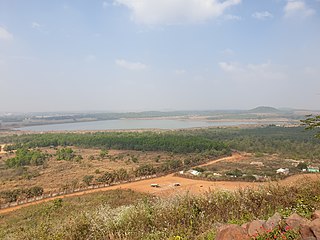
Nabarangpur district, also known as Nabarangapur district or Nawarangpur district, is a district of Odisha, India. The city of Nabarangpur is the district capital. Most of its population is tribal and the land is heavily forested. It borders Kalahandi and Koraput districts. Nabarangpur district is situated at 19.14′ latitude and 82.32′ longitude at an average elevation of 572 metres (1,877 ft).
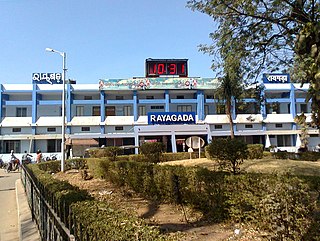
Rayagada is a municipality in Rayagada district in the Indian state of Odisha. It is the administrative headquarters of Rayagada district.
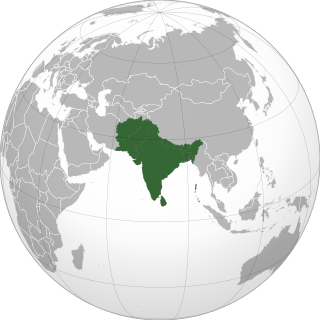
The history of Odisha begins in the Lower Paleolithic era, as Acheulian tools dating to the period have been discovered in various places in the region. The early history of Odisha can be traced back to writings found in ancient texts like the Mahabharata, Maha Govinda Sutta and some Puranas. The region was also known to other kingdoms in region of East Indies due to maritime trade relations.

Madugula is a village in Anakapalli district in the state of Andhra Pradesh in India. It was also known as Vaddadi or Vaddadimadugula and was founded by the rulers of the Matsya dynasty. Later, it merged into the kingdom of Nandapur–Jeypore and during the British Raj it remained an independent Zamindari for sometime. Later, in 1915 the zamindaris of Madugula and Pachipenta were purchased by Maharaja Vikram Dev III and they became a part of Jeypore Samasthanam and were governed by the Maharaja of Jeypore until 1947.

North Andhra or Uttara Andhra, also known as Kalinga Andhra, is a geographic region in the Indian state of Andhra Pradesh. It is between the Eastern Ghats and the coast of the Bay of Bengal. It comprises six northern districts of the state, Srikakulam, Parvathipuram Manyam, Vizianagaram, Visakhapatnam, half of the Alluri Sitharama Raju district and Anakapalli. Alluri Sitharama Raju district was carved out of Erstwhile Visakhapatnam and East Godavari districts. So, half of the Alluri Sitharamaraju district belongs to North Andhra/ Uttara Andhra and the southern part of this district belongs to Coastal Andhra region/ Godavari region. As of 2011 census of India, the region with six districts has a population of 9,338,177.

The Eastern Ganga dynasty were a large medieval era Indian royal Hindu dynasty that reigned from Kalinga from as early as the 5th century to the mid 20th century. Eastern Gangas ruled much of the modern region of Odisha in three different phases by the passage of time, known as Early Eastern Gangas (493–1077), Imperial Eastern Gangas (1077–1436) and Khemundi Gangas (1436–1947). They are known as "Eastern Gangas" to distinguish them from the Western Gangas who ruled over Karnataka. The territory ruled by the dynasty consisted of the whole of the modern-day Indian state of Odisha, as well as major parts of north Andhra Pradesh, parts of Chhattisgarh and some southern districts of West Bengal. Odia language got official status in their regime following the evolution of the language from Odra Prakrit. The early rulers of the dynasty ruled from Dantapuram; the capital was later moved to Kalinganagara, and ultimately to Kataka and then to Paralakhemundi.
Poosapati / Pusapati was the ruling clan of the Northern Andhra region, Vizianagaram.
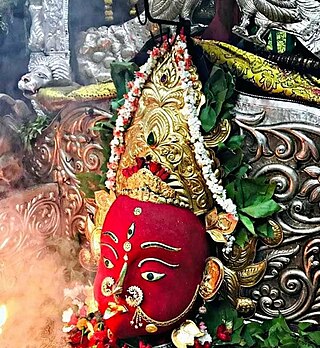
Majhighariani Temple is a shrine to a goddess in the Rayagada township of Odisha. It was built by King Vishwanath Dev Gajapati of the Suryavansh dynasty of Nandapur - Jeypore kingdom. It is believed that he made Rayagada his capital and after the construction of the temple he went on to conquer a vast dominion and expanded his kingdom from parts of Bengal to Telangana in south.
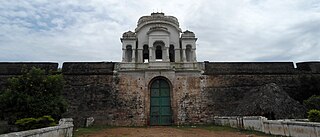
The name is derived from its founder Raja Vijayaram Raj who established a sovereign kingdom by claiming independence from the Kingdom of Jeypore in 1711. It formed alliances with the French and British East India Company to conquer the neighbouring principalities of Bobbili, Kurupam, Paralakhemundi and the Kingdom of Jeypore. However, they fell out with the British and as a result were attacked and defeated in the Battle of Padmanabham. They were annexed as a tributary estate like other principalities and remained so, until their accession to the Indian Union in 1949.
Rath, Ratha or Rathasharma people are Utkala Brahmins having Atreya or Krishnatreya gotra. They belong to the Utkaliya Brahmin group of Northern India Panch Gauda Brahmins. Among other Brahmin communities they hold high social status as learned scholars. Others took advice from them regarding religious or social activities.

Vira Pratapa Purushottama Deva was the second ruler from the Suryavamsa Gajapati dynasty. His father Gajapati Kapilendra Deva Routaraya chose him as his heir to rule the Gajapati Kingdom at the banks of river Krishna where he breathed his last. This decision infuriated his elder brother Hamvira Deva who was a battle hardened and successful warrior fulfilling the task of conquering the southern territories and expeditions against the Vijayanagara Empire as wished by his father.

Prataparudra Deva was the third Gajapati emperor of Odisha from the Suryavamsa Gajapati Empire founded by his grandfather Kapilendra Deva. He reigned from 1497 to 1540 CE. Besides being a monarch, he was a devout Vaishnava and adherent of the famous saint, Sri Chaitanya who arrived in Odisha during his reign. His life was extremely occupied with overwhelming military campaigns in defense of his inherited territory from three frontal invasions by the enemy states Vijayanagar, Hussain Shahi dynasty of Bengal and Turko-Persian Qutb Shahi dynasty of Golconda. He lost large portions of his territory to the neighboring enemy states initiating the dissolution of Odisha's military hegemony and imperial status that continued for nearly a period of 600 years before him.
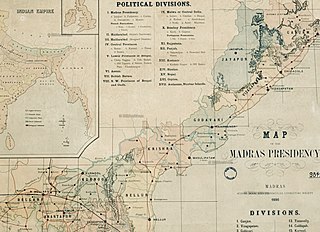
Jeypore Estate or Jeypore Zamindari was a Zamindari estate of the Madras Presidency and later of Orissa Province in British India. Historically it was a kingdom known as Jeypore Kingdom, located in the highlands of the western interiors of the Kalinga region that existed from the mid-15th century to 1777 CE. It was earlier a tributary state of the Gajapati Empire and following its decline in 1540, it gained sovereignty and later became a tributary state of the Qutb Shahis until 1671. The kingdom regained degrees of semi-independence until it became a vassal state of the British in 1777. It eventually formed a part of the linguistic Orissa Province in 1936 upon transfer from the Madras Province and became a part of the independent Union of India in 1947.
Vishwanath Dev Gajapati was the king of Jeypore who established a kingdom in the region of southern Odisha and northern Andhra Pradesh. The Silavamsa king Pratap Ganga Raja died without any male heir, only leaving behind his wife and daughter Lilavati who married Vinayak Dev, the ruler Gudari and Great Grandfather of Vishwanath Dev Gajapati.

The Bhoi dynasty or the Yaduvamsa dynasty were a medieval Hindu dynasty from the Indian subcontinent, which originated in the region of Odisha that reigned from 1541 to 1560 CE. Govinda Vidyadhara had usurped the throne from the later weaker Suryavamsa Gajapati Empire rulers as the kingdom started weakening but had a short-lived reign as ruling chiefs of Odisha as the ensuing internal rivalries and constant threats of invasions rendered them weak and were eventually overthrown by Mukunda Deva of Chalukya Dynasty in 1560.
Trikalinga is a historical region of central-east India, mentioned in several historical sources. Its identification and its relation to the term "Kalinga" is debated among modern historians, who variously identify it as a distinct region to the west of Kalinga, a larger region comprising Kalinga and two other regions, a constituent of the greater Kalinga, or the three divisions of Kalinga proper.















